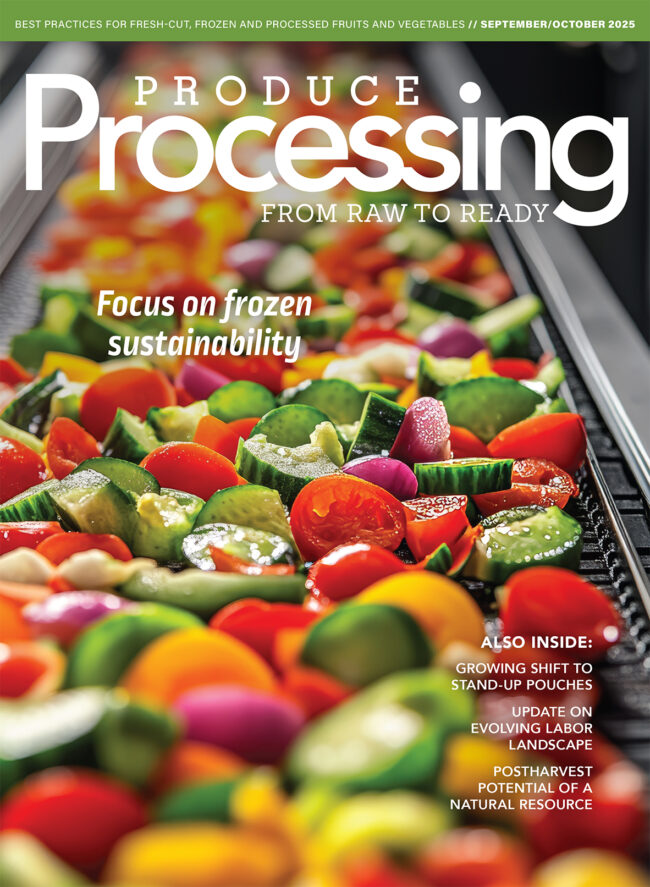Traceability Timeline Tweaked
Traceability Timeline Tweaked: Milestones adjusted
The Produce Traceability Initiative is still moving forward and the priorities haven’t changed, members of a coalition of industry associations told media on May 25, while announcing an adjustment to the Milestone dates.
The Canadian Produce Marketing Association, Produce Marketing Association and United Fresh Produce Association, speaking on behalf of the PTI steering committee, reaffirmed the commitment to PTI and GS1, as well as the voluntary nature of the initiative and the end point of 2012. But the committee is addressing concerns from member companies and moving the goals for the next two milestones.
Milestones 4, which calls for human-readable information on cases, and Milestone 5, which called for that information to be encoded on the barcode, were both originally scheduled to be completed a full year before Milestone 6, where retailers would be able to read and record inbound cases.
“Is it necessary to get those done a year ahead of Milestone 6” said Bryan Silbermann, president and CEO of PMA. “Given some of the difficulties, the direction is there but people need a little more time.”
For that reason, Milestones 4 and 5 have been pushed back to correspond with Milestone 6. Those three steps have a target goal 2011, with the final Milestone 7, the ability to read and store information on outbound cases, met by 2012.
During discussions with industry members, it became clear to the steering committee that there was confusion over adoption, best practices and the voluntary nature of the initiatives. The industry associations also addressed these issues in their press conference last month.
The steering committee and supporting associations will work on the foodservice and retail arenas for consistent and uniform adoption, said Tom Stenzel, president and CEO of United Fresh. There is a traceability initiative underway in the foodservice industry, the Foodservice GS1 U.S. Standards Initiative, led by the International Foodservice Distributors Association, National Restaurant Association and GS1. That initiative has some of the same goals and standards, and Stenzel said PTI leaders had engaged in conversations with the foodservice initiative members. That initiative will directly affect the produce supply chain, Stenzel said, and there are things PTI can learn from the foodservice initiative.
PTI also is working more closely with other fresh food initiatives in order to increase the value of GS1 for retailers across the fresh food category. This will lead to a harmonized approach and better coordination, Silbermann said. Moving forward, PTI will be working hand-in-hand with GS1, he added.
Moving Milestones 4-6 to one date will allow for more time to develop best practices, including working on pilot projects that will benefit retailers. For example, a pilot study could work with field packers to figure out the best way to capture outbound data from the warehouse to the store, Stenzel said. While the timeline seems short to develop pilot projects, Stenzel said there already are companies working on PTI programs, so any pilot projects will partner with them.
“We have active pilots right now, and we’re going to link them together,” said Dan Vache, vice president of supply chain management for United Fresh.
The pilot projects would also include commodity groups that have voiced concerns, Vache said. The steering committee members are working toward increased communication with the industry for “broader and deeper engagement,” according to a statement. Future pilot projects and planning will be done with the input from various market sectors.
Finally, members of the PTI steering committee expressed their commitment to the voluntary nature of the initiative. The Milestone dates are not “must comply” deadlines, but are target goals, Silbermann said. There will be fast and slow adopters, and the decisions will be guided by the marketplace and not associations, he said.
PTI has gone from idea to implementation on some levels in the course of only three years. While there has been adoption and success along the way, implementation has proven to be complex, especially for bulk commodities. The adaptable nature of the PTI Milestones allows for flexibility, which should ultimately help its adoption across the produce industry.










